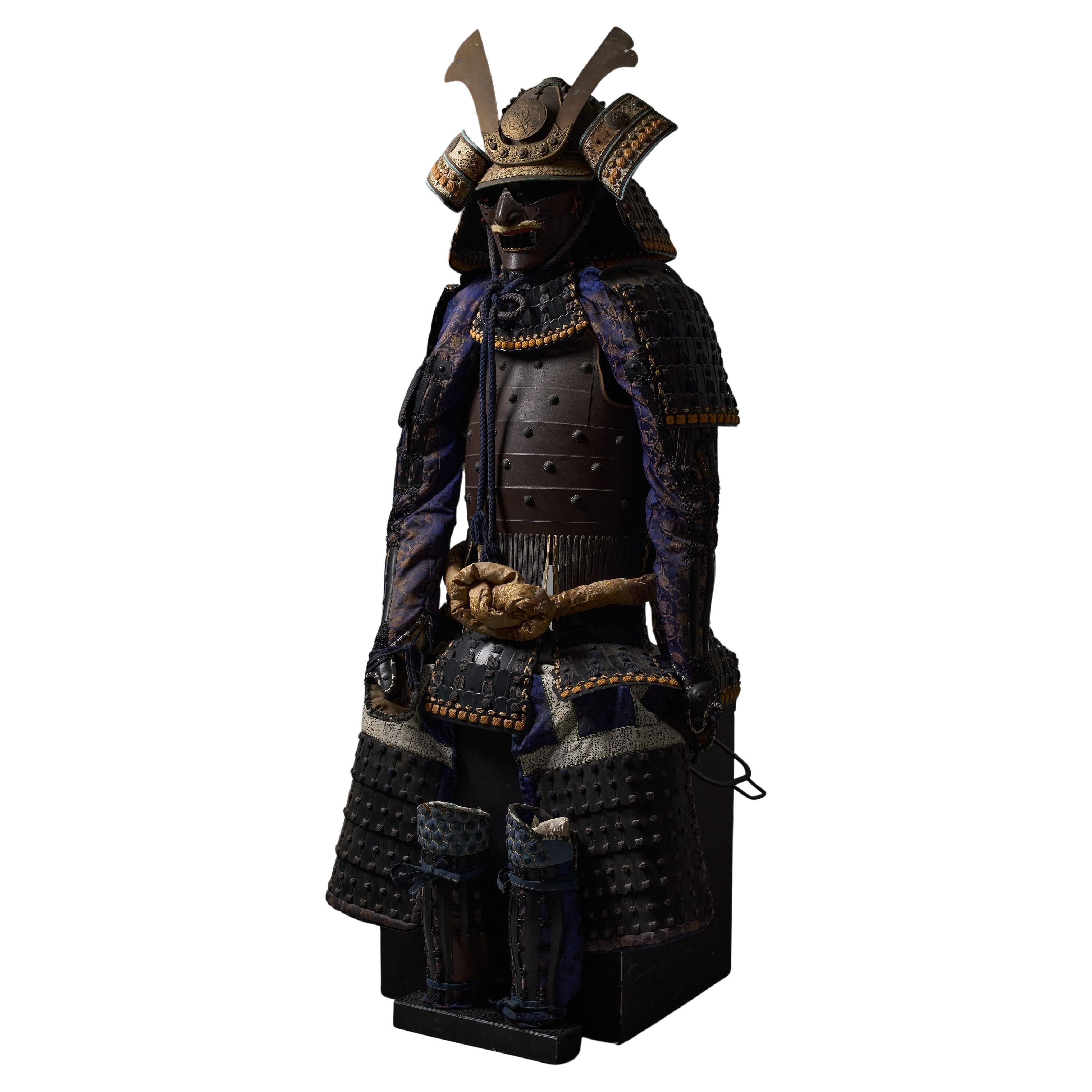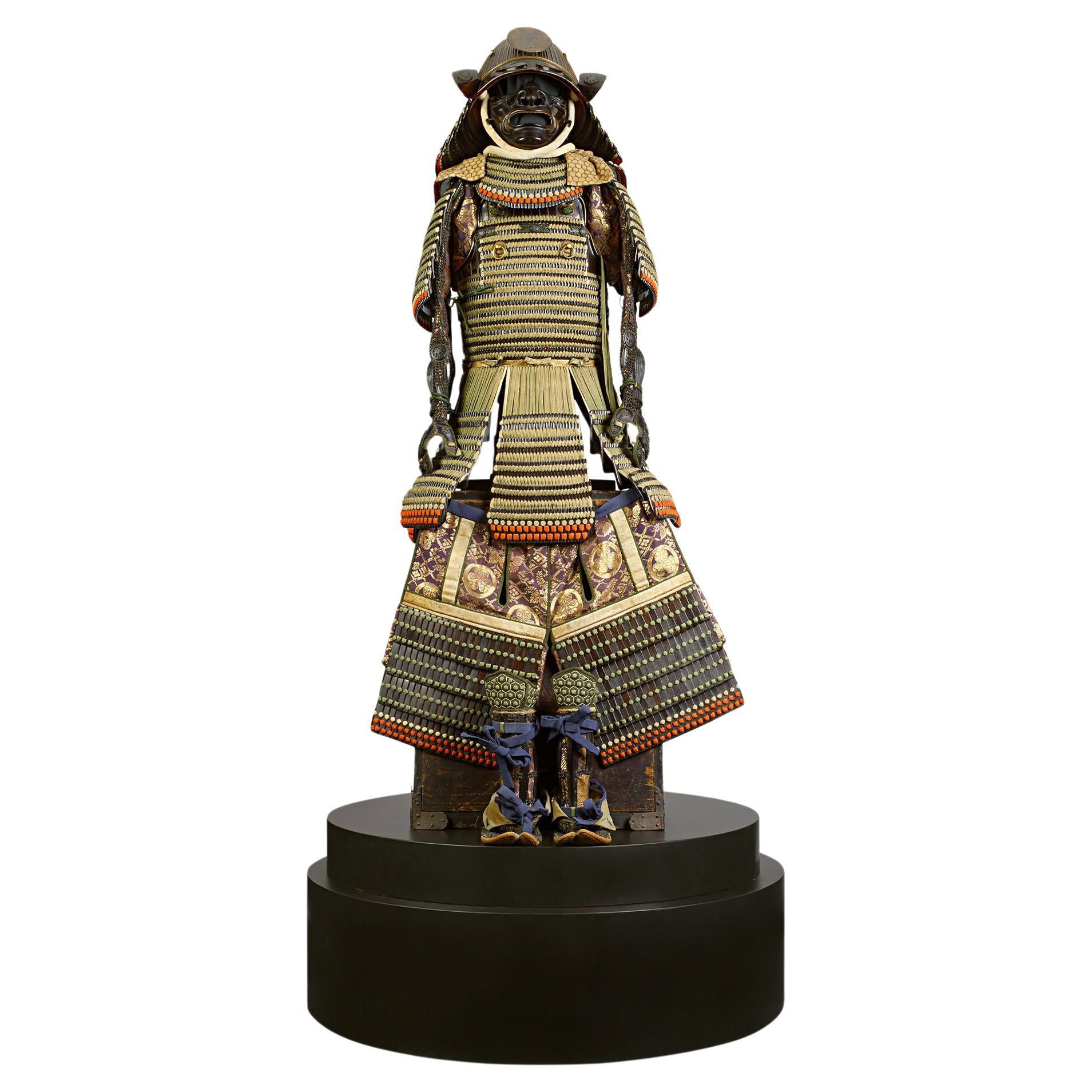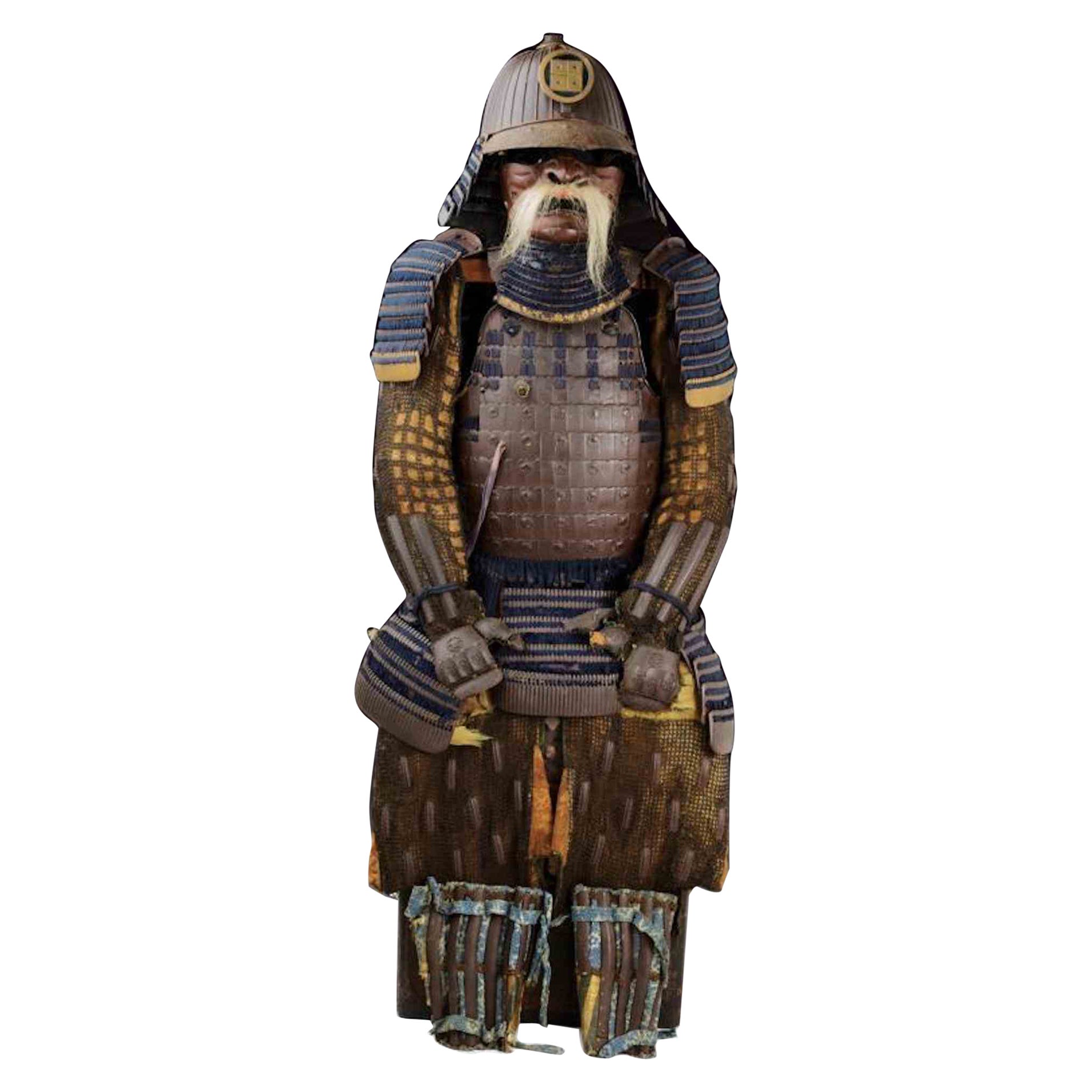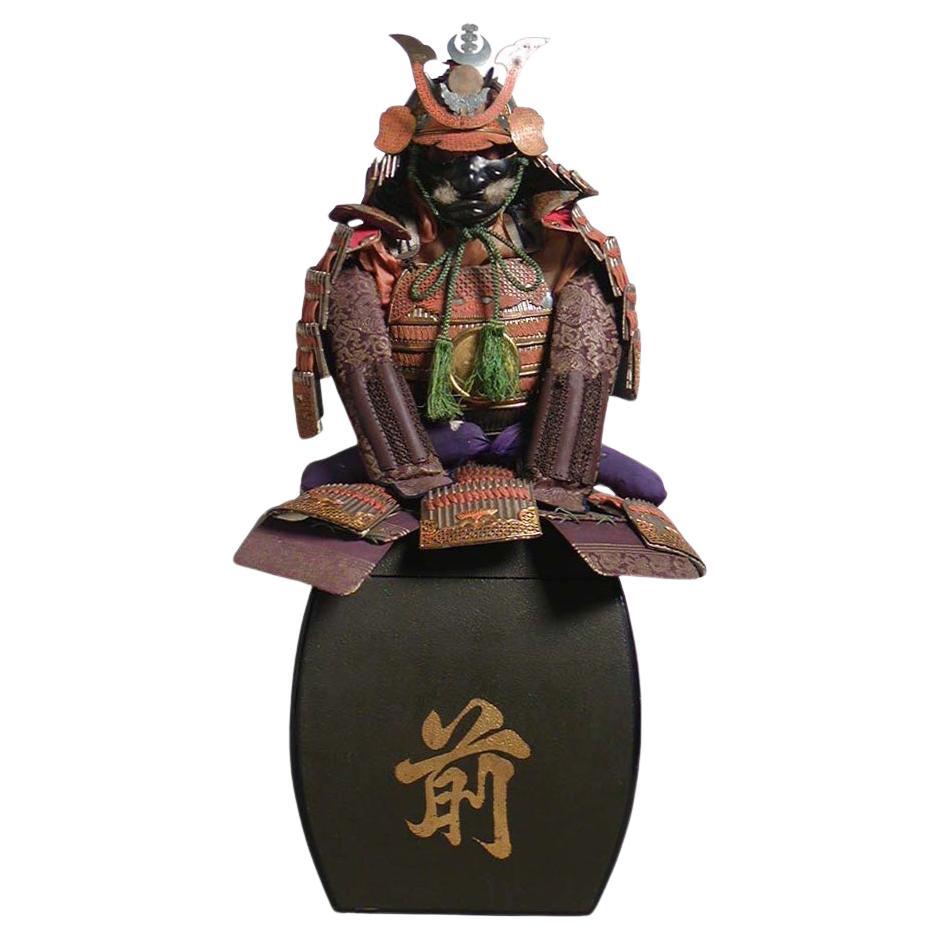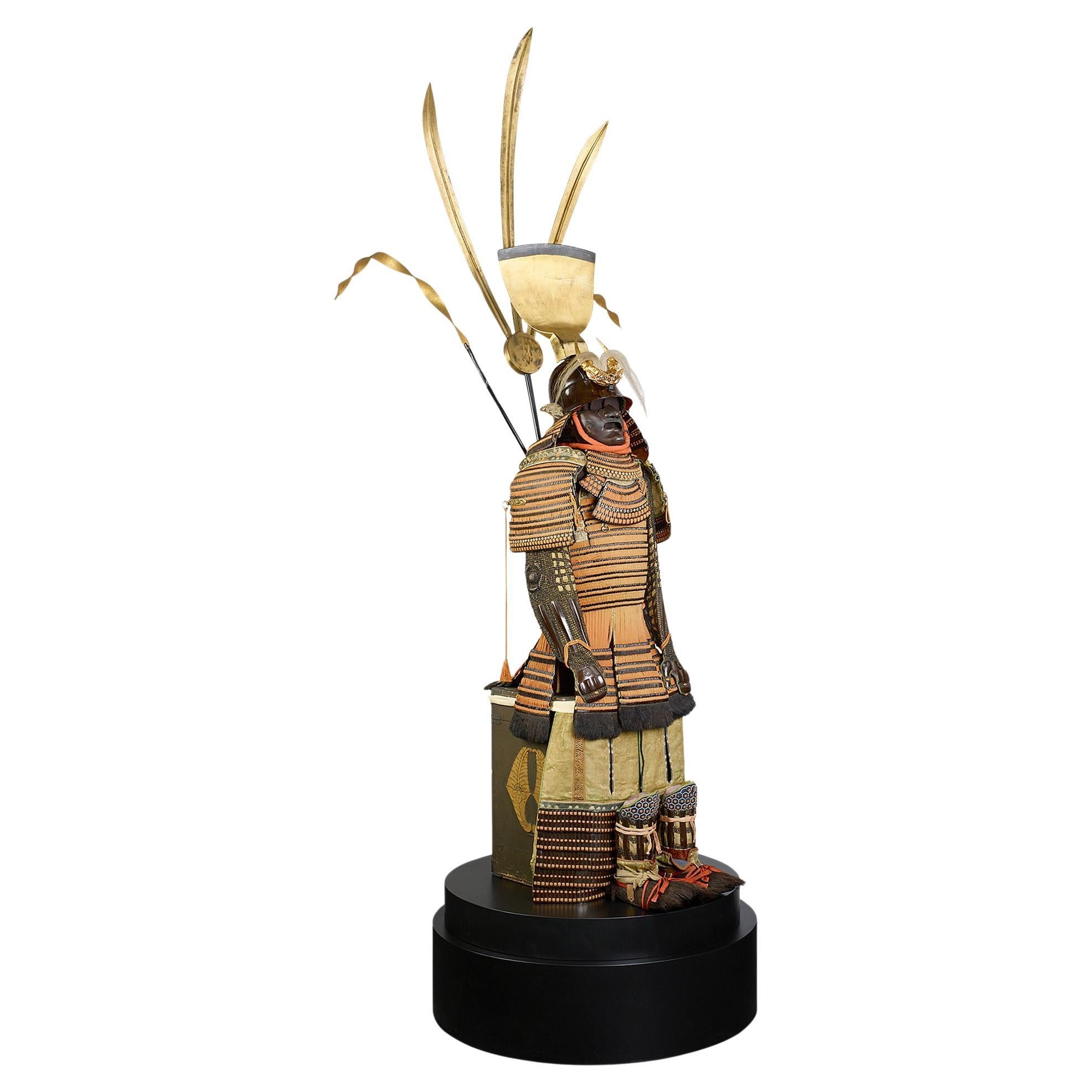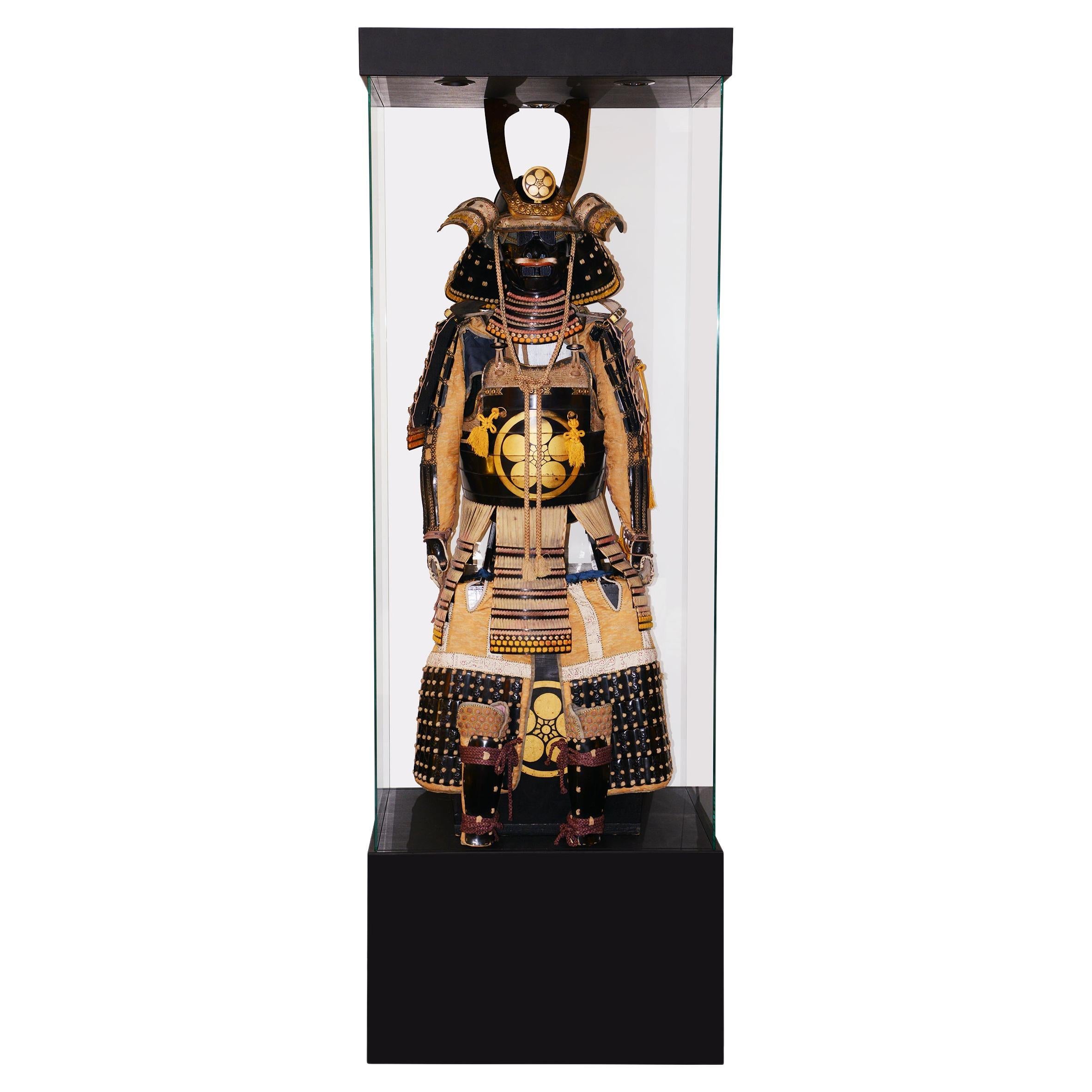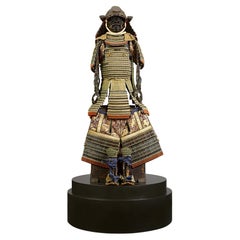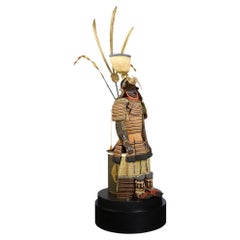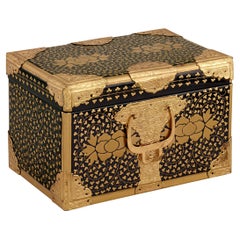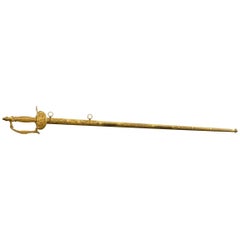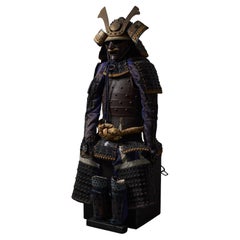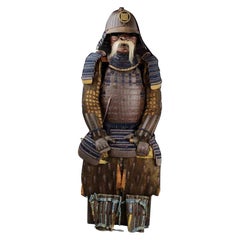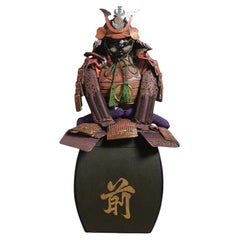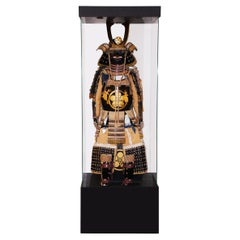Items Similar to Edo Period Samurai Suit Of Armor
Want more images or videos?
Request additional images or videos from the seller
1 of 13
Edo Period Samurai Suit Of Armor
$188,500
£139,951.22
€163,081.68
CA$261,698.89
A$292,726.65
CHF 152,336.67
MX$3,603,564.91
NOK 1,938,038.15
SEK 1,818,261.82
DKK 1,216,752.05
Shipping
Retrieving quote...The 1stDibs Promise:
Authenticity Guarantee,
Money-Back Guarantee,
24-Hour Cancellation
About the Item
This exquisite Tetsusabiji Uchidashi Gomai Dou Gusoku (Five-Plate Russet Iron Embossed Cuirass Armor), crafted in the 18th century, exemplifies the pinnacle of Edo-period samurai armor design and craftsmanship. Made from the finest materials available during this renowned period of Japanese history, this complete suit of armor embodies the traditional elegance and functional design characteristics of samurai martial attire. This type of armor would have been worn by an esteemed samurai of the Asano clan from Akino Kuni, within the Hiroshima Domain—the most prestigious branch of the famous clan.
Housed in its original paulownia wood storage box, this rare suit is complete and in pristine condition, a remarkable feat. All of the fine materials, including lacquerware plates, russet iron, silk and copper, coalesce into a beautiful and completely functional work of art. Before the Edo period, Japan had been experiencing internal wars for over 1000 years. Once the Tokugawa Shogunate unified the country and relocated the capital to Edo (present-day Tokyo), internal warfare greatly decreased. Even in the relatively peaceful Edo Period, however, superior armors were still crafted as many believed war would come again.
Please see the complete list of exceptional features of this rare suit of armor below.
The helmet is formed from three lacquered plates, featuring turn backs (fukigaeshi), a peak (mabisashi) trimmed with gilded copper, and stenciled doe skin showcasing the Asano clan’s crossed hawk feather heraldry.
The neck guard (manju shikoro) is made from five black lacquered iron lames, complementing the mythically inspired, swordsmanship-celebrated russet iron mask (tengu men).
The signed mask (tengu men) has a finely patinated exterior and a red lacquered interior, intensifying its fearsome visage.
The cuirasse (breastplate) is made of five-plate russet iron, ornately mounted with scrolled gilded copper and features an embossed demon’s face with silver and shakudo eyes and gilded fangs on the breastplate.
The skirt (kusazuri) comprises seven divisions, each with five lames of lacquered molded leather (nerikawa).
The shoulder guards (sode) include six lames of lacquered iron, aesthetically matching the russet iron and adorned with the Asano clan markings.
The armored sleeves (tsutsu gote) are made of russet iron and decorated to reflect the Asano clan.
The thigh guards (haidate) and shin guards (tsutsu suneate) feature a roof tile (kawara) design with green tops (kikko tateage), aesthetically aligned with the cuirasse.
18th century
On base: 65 1/4" high x 25 3/4" wide x 22 5/8" deep (130.18 x 65.41 x 57.47 cm)
- Dimensions:Height: 51.25 in (130.18 cm)Width: 25.75 in (65.41 cm)Depth: 22.63 in (57.49 cm)
- Style:Edo (Of the Period)
- Materials and Techniques:
- Place of Origin:
- Period:
- Date of Manufacture:18th century
- Condition:
- Seller Location:New Orleans, LA
- Reference Number:Seller: 31-87761stDibs: LU891139455092
About the Seller
5.0
Recognized Seller
These prestigious sellers are industry leaders and represent the highest echelon for item quality and design.
Established in 1912
1stDibs seller since 2010
107 sales on 1stDibs
Typical response time: 4 hours
- ShippingRetrieving quote...Shipping from: New Orleans, LA
- Return Policy
Authenticity Guarantee
In the unlikely event there’s an issue with an item’s authenticity, contact us within 1 year for a full refund. DetailsMoney-Back Guarantee
If your item is not as described, is damaged in transit, or does not arrive, contact us within 7 days for a full refund. Details24-Hour Cancellation
You have a 24-hour grace period in which to reconsider your purchase, with no questions asked.Vetted Professional Sellers
Our world-class sellers must adhere to strict standards for service and quality, maintaining the integrity of our listings.Price-Match Guarantee
If you find that a seller listed the same item for a lower price elsewhere, we’ll match it.Trusted Global Delivery
Our best-in-class carrier network provides specialized shipping options worldwide, including custom delivery.More From This Seller
View AllEdo-period Green-Laced Samurai Suit
Located in New Orleans, LA
This exceptional Moegi Odoshi Nimai-Dou Gusoku (Green Laced Armour), crafted in the 17th century, exemplifies the pinnacle of Edo-period samurai armor design and craftsmanship. Made ...
Category
Antique 17th Century Japanese Edo Arms, Armor and Weapons
Materials
Copper, Iron
Edo-period Orange-Laced Samurai Suit
Located in New Orleans, LA
For samurai warriors, the functionality of their armor was as vital as its striking beauty—both elements held equal importance. This orange-laced armor is one of the rarest and most stunning complete Edo-period samurai suits ever crafted, designed for a military leader to convey the gravity of his power and warrior spirit at a single glance.
This particularly rare armor...
Category
Antique 18th Century Asian Edo Arms, Armor and Weapons
Materials
Copper, Iron
Edo-Period Lacquerware Chest
Located in New Orleans, LA
Edo-Period Lacquerware Chest
19th-century
This exquisite chest, inspired by Hasami-Bako travel trunks, is a striking example of Japanese lacquerware. The hiramaki-e technique—applie...
Category
Antique 19th Century Japanese Edo Decorative Boxes
Materials
Gold
South American Presentation Sword
Located in New Orleans, LA
Believed to have originated from the collection of a South American diplomat, the exquisiteness of this presentation sword conveys its ownership by ...
Category
Antique 19th Century South American Other Arms, Armor and Weapons
Materials
Steel, Brass, Bronze
$48,500 / set
19th Century Chilean Huaso Stirrups
Located in New Orleans, LA
This striking and rare pair of Chilean wooden stirrups are true gems. Also known as estribos, these stirrups are carved from a solid block of wood. Tak...
Category
Antique 19th Century Chilean Other Arms, Armor and Weapons
Materials
Silver, Steel
Venetian Wood Sculpture
Located in New Orleans, LA
An exceptional and monumental Venetian wood sculpture surmounted by two putti holding a footed tray. The base is decorated with a bas-relief of the view ...
Category
Antique 19th Century Italian Other Figurative Sculptures
Materials
Wood
$14,500
You May Also Like
Samuraï armor
Located in Brussel, BE
Amazing and unique Samuraï armor.
End of XIXth century, early XXth century.
Nimai do Okegawa gusoku (2 plate with barrel form cuirasse armor).
Composed o...
Category
Antique Late 19th Century Japanese Japonisme Antiquities
Materials
Iron
$30,063
A Tosei Gusoku (Samurai's Armour), 17th Century
Located in Roma, IT
Belonging to the period 1603-1867, most likely between the end of 17th and the beginning of 18th Century, this beautiful armour is a 32-plate suji kabuto made of brown-lacquered iron...
Category
Antique 17th Century Japanese Figurative Sculptures
Materials
Metal, Iron
Japanese Boy's day display suit of armor
Located in Point Richmond, CA
Antique Japanese miniature model of a suit of armor made for the Boy’s day display. Constructed of a lacquered paper cuirass, upper arm guar...
Category
Antique 1850s Japanese Edo Sculptures and Carvings
Materials
Textile, Wood, Lacquer, Paper
Samuraï Maeda Armor
Located in Paris, FR
Armor Samuraï Maeda, ceremonial armor
with handcrafted helmet and protects.
Made with original japanese fabrics only use for
samuraï armor confection, ...
Category
Vintage 1930s Japanese Arms, Armor and Weapons
Materials
Fabric, Glass
$28,260
18th Century Hirate Clan Samurai Armor with Signed Kabuto Helmet
Located in Fukuoka, JP
This is a truly exceptional set of 18th century Samurai armor that is sure to impress any collector or enthusiast. The patinated iron used in its construction has aged beautifully, giving the armor a truly unique appearance that is sure to catch the eye. The brocade silk and cotton padding used to line the armor not only provide a comfortable fit for the wearer, but also add an extra layer of decorative flair.
One of the most striking features of this armor is the crests of the Hirate samurai clan that adorn it. These crests are a symbol of the clan's identity and heritage, and their presence on the armor speaks to the deep connection between samurai warriors and the clans they belonged to.
The Kabuto...
Category
Antique 18th Century Japanese Antiquities
Materials
Iron
Japanese Red Samurai Armour Beginning of Meiji period 1900s
Located in Paris, FR
This is an armour of samurai. It was made around 1900s in Meiji era. This armour was not used in actual war so it was made as decoration, because of that, it is in good condition as its age.
There are some scratches and missing parts, if you need some more information, please let us know, we will respond you as soon as possible and send more photos.
This armour can be folded in a box. The box is getting damaged so it is not in good condition. We might send this armour in other box.
Dimensions: 50 x 50 x H170 cm
Scholars agree that Japanese armour first appeared in the 4th century, with the discovery of the cuirass and basic helmets in graves. During the Heian period, the unique Japanese samurai...
Category
Antique Early 1900s Japanese Meiji Antiquities
Materials
Metal, Iron
